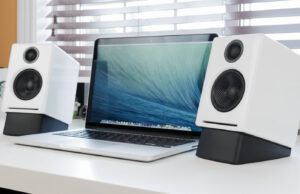Is a 120GB SSD Enough for OS Drive?
Whether you’re building a new PC or simply want to bring an old one back to life, adding an SSD is one of the best choices you can make. While an SSD may be a bit pricey compared to a mechanical drive, it will more than make up for it with the impact it will have on the overall performance of the PC – even the most entry-level SSD you can find out there is several times faster than the fastest hard disk, so you’re definitely getting your money’s worth.
The problem is the price, though: a mechanical hard drive with a capacity of 1 TB costs less than a 120 GB SSD, so judging solely by this metric, it’s easy to see why most people opt for an HDD. However, there’s one aspect that most people don’t take into account: opting for an SSD doesn’t mean you need to store ALL your data on it. The trick is to get an SSD that’s spacious enough for your operating system and commonly used software, and go with a mechanical hard drive for storing the rest of your data.
So, the question is, what does “spacious enough for your operating system” really means? Is the popular option of 120 GB enough? Let’s find out.
Microsoft Windows
Microsoft Windows is likely to be your operating system of choice, so let’s start with it. According to Microsoft, Windows 7, Windows 8 and Windows 10 each require 16 to 20 GB of free space, depending on whether you opt or the 32-bit or 64-bit version. That figure is basically the minimum free space to allocate, but do keep in mind that the operating system requires additional space for swap file, system restore and other services; even so, it’s pretty clear that any of Microsoft’s operating systems can be comfortably installed on a 120GB SSD with plenty room to spare.
Linux
Linux used to be an operating system for power users that needed raw power with little bling, and a stable environment to get productive within. Usually the operating system of choice for developers, programmers and other tech-savvy people, Linux has tremendously evolved; nowadays, Linux can be just that, or it can be a modern-looking operating system with a friendly and intuitive user interface, a plethora of apps installed out-of-the-box and, last but not least, free to use thanks to its open-source model. It all comes down to the distribution you’re looking at, as there are a ton of them, each customized for a certain public.
Since there are countless distributions out there, going through each of them and their requirements would take forever, so we’re just going to look at some of the most popular options for the most popular categories. So, without further ado, we have Ubuntu, one of the most popular all-purpose distros, coming with a very modest space requirement of just 5 GB for the base installation.
Ubuntu Studio, a distro optimized for music producers requires 10 GB of free space, while Elementary OS and openSUSE, both all-in-one solutions, require 15 GB and 40 GB, respectively.
Fedora, one of the all-time favorite options of professionals requires 10 GB of free space for installation, whereas another popular option, Debian, comes with a significantly more modest requirement of just 780 MB.
macOS
macOS is Apple’s proprietary operating system, and ships with Apple computers or laptops. So why do we include it here, you ask? The answer is simple: Hackintosh. Since a Hackintosh is basically running an official version of a macOS operating system, the space requirement is the same as for an Apple computer, which is roughly 14.3 GB of space required for the latest version, High Sierra.
Software
Regardless of what your primary use for your computer is, along with your operating system you will need some software, and it’s highly indicated that you also install said software on the SSD for improved performance.
Basic software that everyone should have such as an Internet browser, an office suite and a multimedia player will usually amount to a few gigabytes of space, at most. It’s specialized software such as Adobe’s Creative Suite (Photoshop, Illustrator, Premiere, etc.), where each component requires a few GB of free space, that will eat up into your space quickly. Be that as it may, with the largest operating system version taking about 40 GB, we’re talking about a rest of 80 GB of free space left on a 120 GB drive – plenty of space for even the most pretentious of software, and maybe even for some of the files you’re working with.
Conclusion
Drawing the line, a 120 GB SSD is more than enough for your operating system and regularly used software, and it should even leave you with some headroom, as we all know how operating systems tend to inflate in size in time.
If you like to live dangerously, you can even consider installing some not-so-pretentious games on your SSD (we’re not talking latest titles such as GTA V, as that game requires 60GB of free space), but do note that aside from a slightly reduced loading time, games don’t really benefit much from being installed on an SSD.
Another fun way to take advantage of the extra space is to set up dual-booting: two 60 GB partitions should be enough to each hold an operating system and some software comfortably, so you can have Windows and Linux running on the same machine, at blazing speeds, thanks to your awesome SSD.
As you can see, a 120 GB SSD may seem small, but it’s more than enough for an operating system (or two), your casual software, and the warm feeling you’ll have every time you’ll see your computer booting up in just a few seconds.













4 Comments